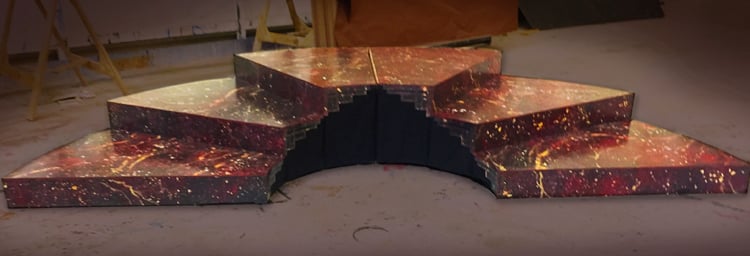While investigating different glossy top coats for a project with my design students at Kent State, I made a new discovery: Rosco Premiere Clear Gloss. I have been a scenic artist for a long time – nearly 30 years, in fact (gosh, I can’t be that old. I must have started when I was a toddler!). This spring, however, was the first time I realized that Rosco sold Premiere Clear – a range of water-based polyurethane clear coats available in flat, satin and gloss finishes
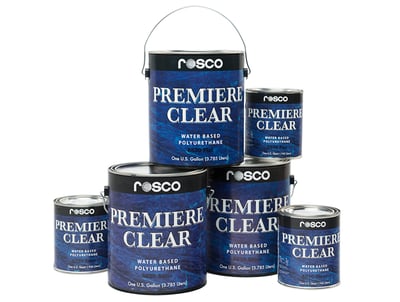
While working on THE FAKE FOOD COOKBOOK Props You Can’t Eat for Theatre, Film, and TV (scheduled for publication by early 2018), my co-author, Karestin Harrison, wrote about how she used the Premiere Clear Gloss coating on one of her “recipes.” The photo of Karestin’s lobster tail looked much more glossy than most other acrylic gloss coatings on the market… I was intrigued.
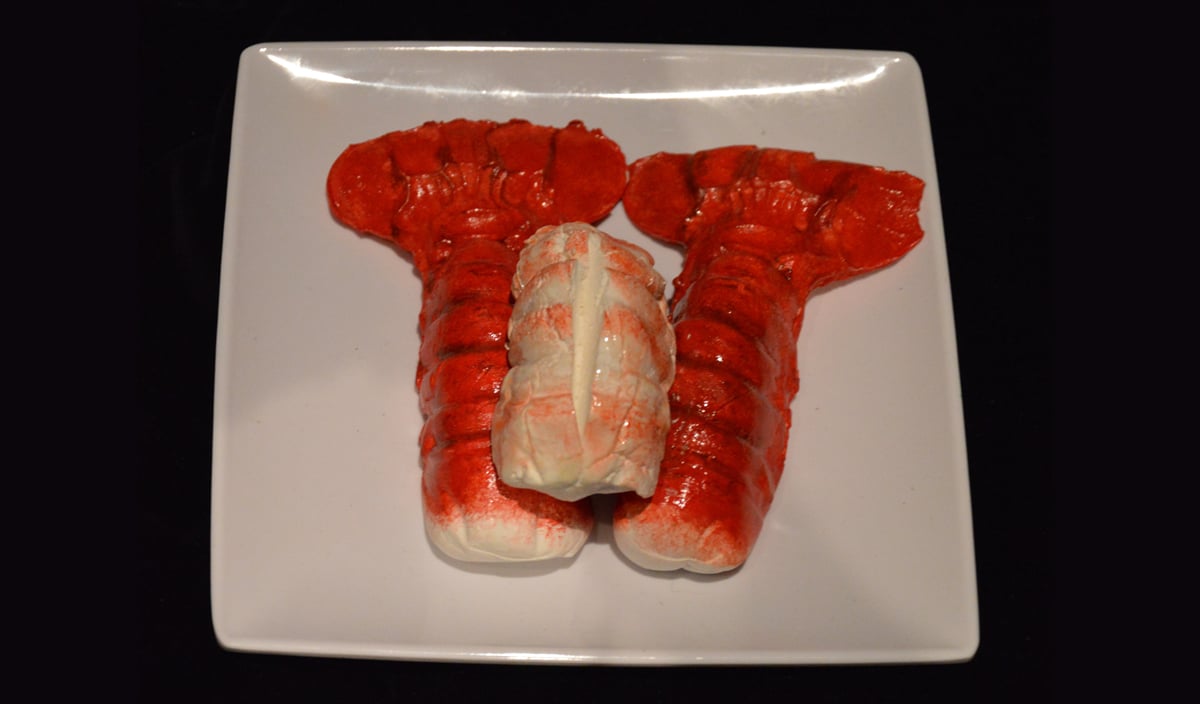 A faux lobster tail prop coated with Premiere Clear Gloss. Photo: Karestin Harrison
A faux lobster tail prop coated with Premiere Clear Gloss. Photo: Karestin Harrison
A few months later, I was working with my Design Studio Scenery class at Kent State University's School of Theatre and Dance to design and build the set for the National Academy of Television Arts and Sciences Lower Great Lakes Regional Emmy® Award Ceremony at the Hilton Cleveland Downtown. One of the key elements of the design was an elegant curved double staircase of painted marble for the recipients to access the stage. We had a limited budget for the show, but I wanted to get the most reflective sealer for the project. This gave me the chance to get a closer look at the Premiere Clear product, so I did a side-by-side test of Minwax® Polycrylic™ Gloss next to the Premiere Clear Gloss, Satin, and Flat.
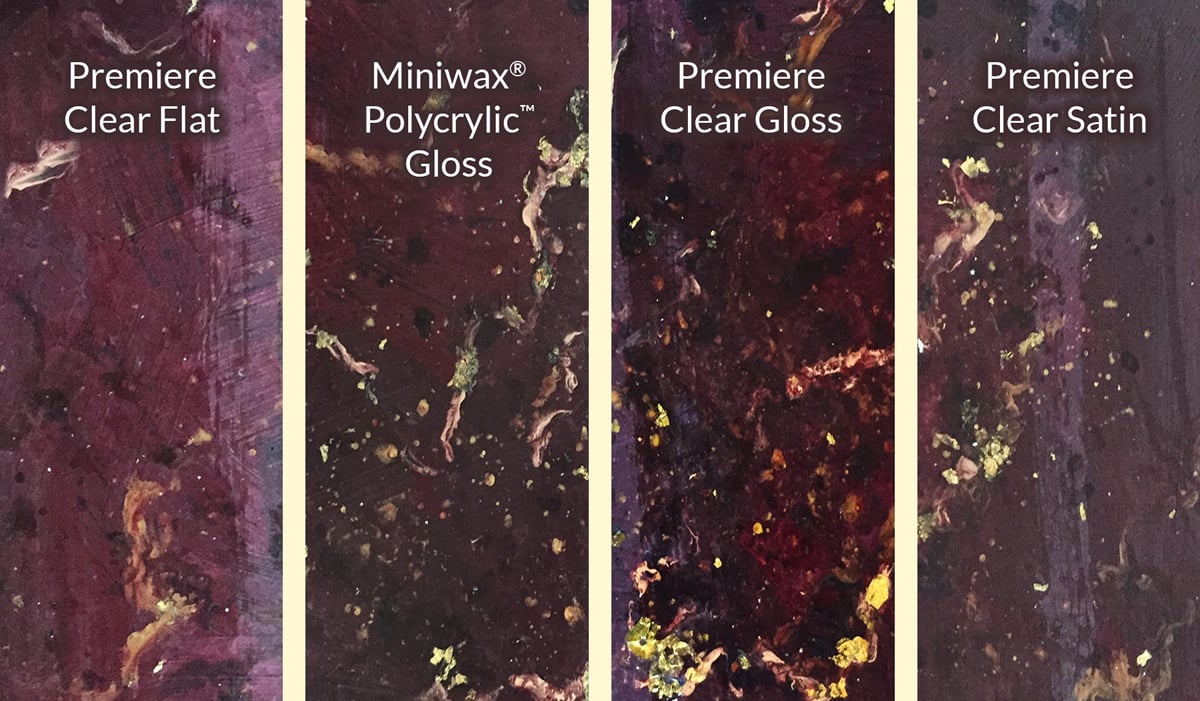 Tammy Honesty’s surface coating comparison sample
Tammy Honesty’s surface coating comparison sample
On the sample, I discovered that the Premiere Clear Flat was extremely matte, yet performed like a gloss by showcasing a depth of colors and layers from the paint treatment. The Premiere Clear Satin had the same benefits of the flat but with a different sheen. The Premiere Clear Gloss was very glossy and created deeper and richer colors versus the Minwax Polycrylic Gloss.
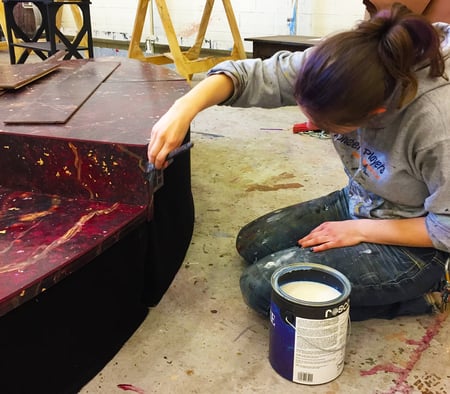 Student Scenic Artist Amanda Nerby applies the Premiere Clear Gloss to the faux marble staircase
Student Scenic Artist Amanda Nerby applies the Premiere Clear Gloss to the faux marble staircase
We painted sheets of Masonite and sealed them with two coats of Premiere Clear Gloss before routing the sheets to the shape of our curved stairs. When the students were sealing the sheets of Masonite for the NATAS LGL set with the Premiere Clear Gloss they remarked how silky the application was compared to other sealers they'd used in the past. The Premiere Clear saved us time thanks to its self-leveling characteristics as it smoothed out the lap lines from the rollers as it was applied. The few extra bucks for ‘idiot-proof application’ were definitely worth it!
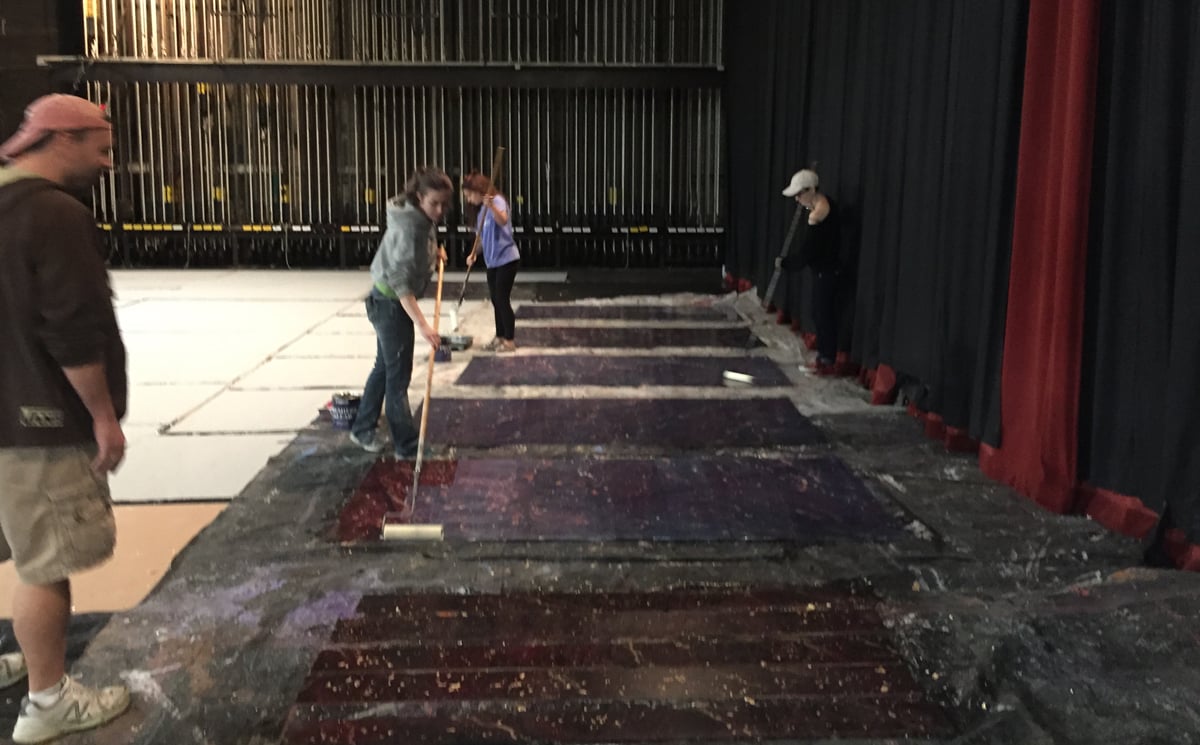 Students Terry Martin, Amanda Nerby, Isabella Trevino, and Kelly Sherlock applying
Students Terry Martin, Amanda Nerby, Isabella Trevino, and Kelly Sherlock applying
Premiere Clear to the Masonite sheets
Once the Premiere Clear dried, not only had it produced an ultra-glossy, glass-like surface – but the coating proved to be quite durable as well. The sealer held the paint together and didn’t chip when routed to shape. In fact, it held so well that there was a fringe hanging off the cut Masonite, which was easily smoothed out with sandpaper afterward.
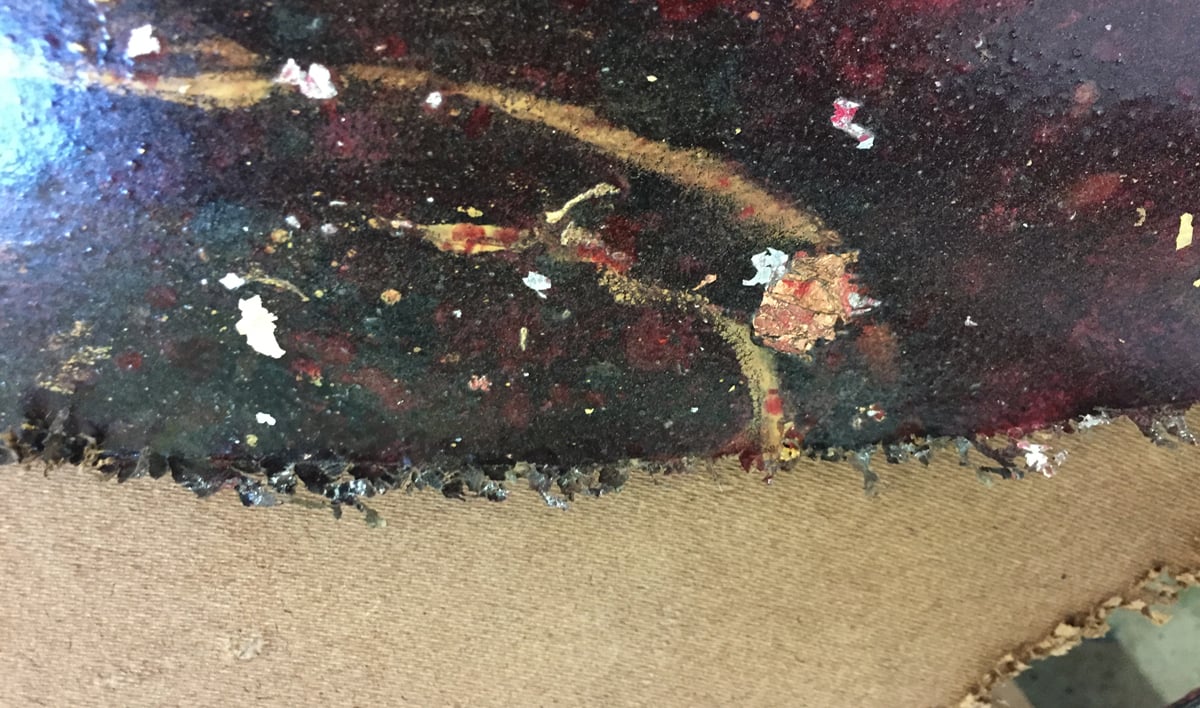 A close-up photo of the fringed on the routed edge of the set piece
A close-up photo of the fringed on the routed edge of the set piece
- showing the strength of Premiere Clear's bonding power
Out of curiosity, I set the original sample board outside for about a month to see what the elements would do to the finishes. After a month, the Masonite warped slightly, but there seemed to be no significant change to the scenic treatment. The glossy surface, from my observations, was never slippery – from the first day to a month later.
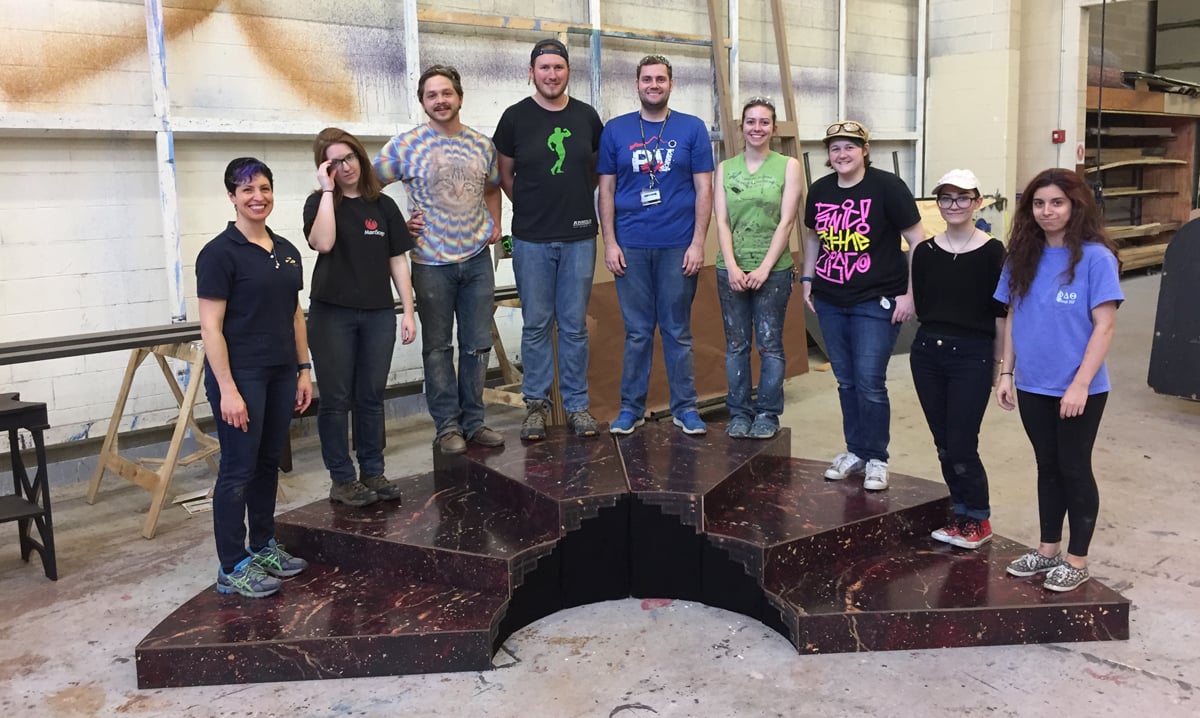 Kent State University Design Studio Scenery Class posing on the completed set piece.
Kent State University Design Studio Scenery Class posing on the completed set piece.
(L-R) Tammy Honesty (instructor), Heather Sinclair, Devin Gallo, CJ Glowacki, Patrick Ulrich,
Amanda Nerby, Islay Reed, Kelly Sherlock, Isabella Trevino,
(not pictured Zahra Hakki, Chris Seifert)
While the up-front cost of the Premiere Clear is higher than other surface coating options, the quality of the product is worth the additional money. It’s worth noting that, although we did not dilute it, the directions state that it is possible to dilute the Premiere Clear up to 20% with water – making it a competitive, economic alternative to the water-based poly-acrylics. The product supplied me with a durable, glossy coating, and I look forward to finding opportunities to use Premiere Clear for floors and props in the future.
 The final NATAS LGL Emmy Awards set! Photo: © 2017 Scott T. Morrison / Discovery Photo
The final NATAS LGL Emmy Awards set! Photo: © 2017 Scott T. Morrison / Discovery Photo
To see more of Tammy Honesty’s scenic work, be sure to visit her website. If this post has you “intrigued" to learn more about Premiere Clear like Tammy was – please explore the Premiere Clear product page on our website.
Save
Save
Save
Save
Save
Save
Save
Save
Save
Save

